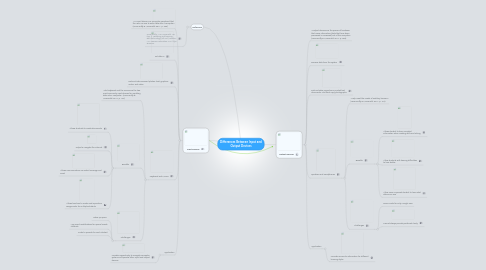
1. Input Devices
1.1. "An input device is a computer peripheral that the user can use to enter data into a computer" (Lever-Duffy & McDonald, 2011, p. 395).
1.2. Put data in
1.3. Data includes scanned photos, text, graphics, audio, and video
1.4. Keyboard and Mouse
1.4.1. "The keyboard and the mouse are the two most commonly used devices for inputting data into a computer" (Lever-Duffy & McDonald, 2011, p. 146)
1.4.2. Benefits
1.4.2.1. Allows studnets to create documents
1.4.2.2. Helps to navigate the Internet
1.4.2.3. Allows communication via instant message and email
1.4.2.4. Allows teachers to create and reproduce assignments for multiple students
1.4.3. Challenges
1.4.3.1. Takes up space
1.4.3.2. May need modifications for special needs studnets
1.4.3.3. Costs to provide for each student
1.5. Application
1.5.1. Provides opportunity to navigate computer system and operate other input and output devices
2. Reference
2.1. Lever-Duffy, J. & McDonald, J.B. (2011). Teaching and learning with technology (4th ed.). Boston, MA: Pearson Education, Inc./Allyn & Bacon.
3. Output Devices
3.1. "Output devices are the pieces of hardware that move information (data that have been processed or accessed) out of the computer" (Lever-Duffy & McDonald, 2011, p. 398).
3.2. Recieve data from the system
3.3. Data includes projections, printed text documents, and hard copy photographs
3.4. Speakers and Headphones
3.4.1. "Help meet the needs of auditory learners" (Lever-Duffy & McDonald, 2011, p. 157).
3.4.2. Benefits
3.4.2.1. Allows student to hear recorded information when reading skills are lacking
3.4.2.2. Allow students with hearing difficulties to hear better
3.4.2.3. Allow vision impaired student to hear what others can see
3.4.3. Challenges
3.4.3.1. Some made for only a single user
3.4.3.2. Cannot always provide preferred clarity
3.5. Application
3.5.1. Provides access to information for different learning styles
